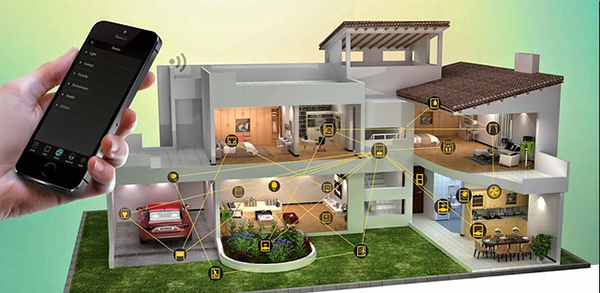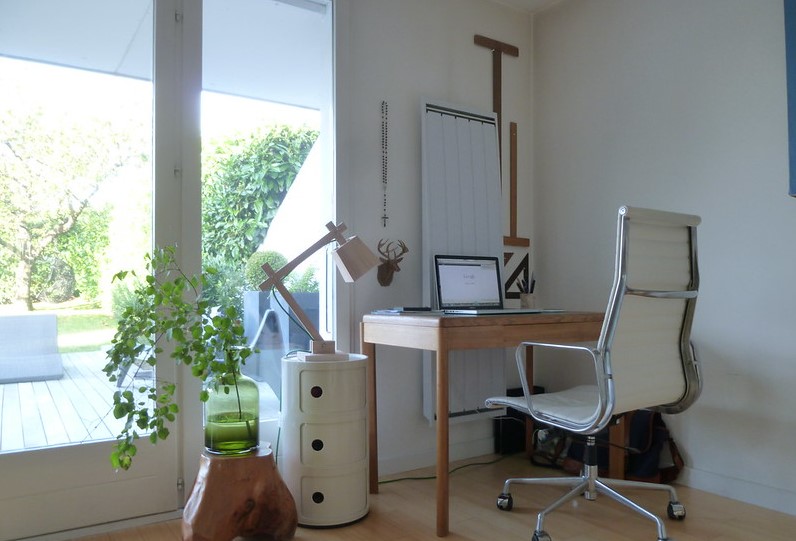The Internet of Things, driverless cars, an increasing number of people working from home, the need for greater sustainability, more durable and eco-friendly construction materials, a shortage of affordable housing in cities (particularly for younger individuals) – these are just a few of the factors driving change in the way we build and use our homes. So what impact is all of this having, and what can we expect the homes of the future to look like? Let’s take a look!
New materials
While there have always been those architectural mavericks who turn the conventional method of building homes on its head, for the most part, we’ve been building houses in much the same way for decades. As the human population grows and we become ever more aware of the ecological and environmental impact of everything we do on the planet, however, there’s never been more room –or need- for innovation.

Image source: https://www.flickr.com/photos/128073822@N04/16333553675/
Shipping container homes are one of the fastest-growing such innovations – and for good reason. Strong and durable, they’re naturally ‘over-spec’ when repurposed as homes, which means they’re up to the task even when sections of the container are removed for doors and windows. Considering that hundreds of thousands of containers are abandoned by shipping companies each year after they arrive at their destination, it makes sense to use them for affordable housing.
In addition, they can be transformed and fitted into housing off-site and transported intact right to your property, essentially becoming an almost instant home. They can become backyard rental apartments, impressive multi-story homes, and even large-scale apartment buildings. Given all these benefits, we can definitely expect (and hope!) to see more of them cropping up in the future.
Ecobricks made from plastic waste, off-grid earthships constructed from everything from old glass bottles to car tires, and concrete breeze blocks made with waste CO2 are just a few of the other more unusual building materials the homes of the future could be constructed from.
Smart features become standard

Image source: https://www.flickr.com/photos/124783644@N06/15618552126/
Imagine if your home could help you plan your day and calendar, read you the morning headlines, lock all the doors behind you when you leave, turn audio and lighting on and off as you move about, and let you control everything from your thermostat temperature to your CCTV cameras remotely from anywhere in the world. This is not even the future – all these features are already available from home automation systems today. Gadget by gadget and device by device, our homes are steadily becoming smarter and more able to adapt to our needs.
Currently in the works are coffee machines that will have your favorite brew ready for you when you wake up in the morning, touch screen mirrors that can give you the weather forecast while you’re doing your hair, fridges which can let you know you’re about to run out of a certain product, and even stovetops with cameras that will let you record a cooking class or share –ahem- ‘what’s cooking’ with your social media followers.
Working from home

Image source: https://www.flickr.com/photos/kmr2069/11099775543/
It’s currently estimated that by 2027, over 50% of the U.S. workforce will be made up of freelance and remote workers. With the tech already available for people to perform their daily work tasks from wherever they are with the office just a quick video call away, this trend makes sense for both companies and employees. Workers get to avoid the daily commute and work more on their own terms, and businesses benefit from lower overheads and increased productivity. But what does this mean for our homes?
Multigenerational homes, multifunctional rooms, micro-living and tiny houses
An increase in dedicated home office space is the most obvious consequence, but there are some less obvious knock-on effects to consider too. When the company you work for is no longer footing the water and electric bill during working hours, we can expect greater incentive for the average citizen to invest in energy efficiency, gray water recycling, and other money-saving and more sustainable features for the homes.

Image source: https://www.flickr.com/photos/tumbleweedhouses/33943252110/
All the tech in the world can unfortunately not help us to create space where there isn’t any – and with urban overcrowding and soaring property prices, living ‘smaller’ may be the only solution. We can expect more multigenerational homes and shared occupancy arrangements, as well as more compact, multi-purpose living quarters in the future.
Luckily, living tiny can also be living trendy! Innovative ‘tumbleweed’ tiny houses which make the best use of every square inch of available, and allow their occupants to pick up and go when they wish – as every self-respecting digital nomad should be able to – are becoming increasingly popular.
They might not be quite what sci-fi authors of the past predicted, but the leaner, greener, smarter homes of the future are definitely going to be interesting!
